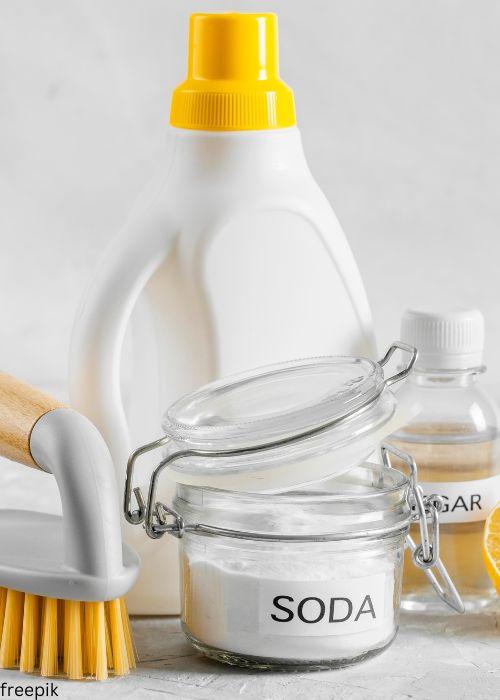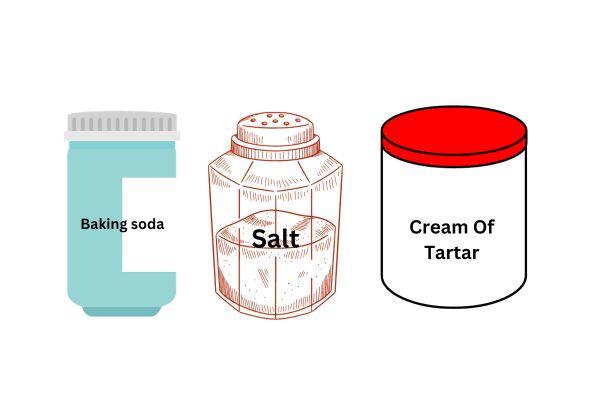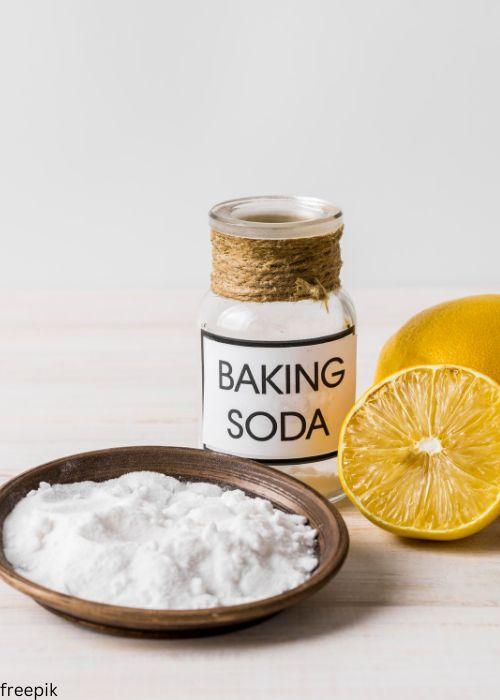Is your kitchen drain giving off swampy vibes? Fret not! You’re not alone. Many homeowners face the challenge of a clogged kitchen drain at some point. But fear not! In this guide, we’ll explore effective and easy steps on how to clean kitchen drain, ensuring a smooth flow and a fresh-smelling sink.
Imagine: You’re in the midst of preparing a delicious meal, and suddenly, the water in your sink refuses to go down. Frustrating, right? The likely culprit behind this inconvenience is a collection of grease, food particles, and soap scum that accumulate over time. But don’t worry – tackling this issue doesn’t have to be a daunting task. With a few easy-to-follow steps, you can have your kitchen drain running like new in no time.
So, grab your gloves and let’s dive into the world of kitchen drain maintenance. From homemade remedies to simple tools, we’ve got you covered. Say goodbye to pesky clogs and hello to a smoothly flowing kitchen drain. Let’s get started on the journey to a cleaner and more efficient sink, with our guide on how to clean a kitchen drain.
Table of Contents
1. How to Clean Kitchen Drain with Baking Soda and Vinegar?

Baking soda and vinegar effectively unclog and deodorize kitchen drains. The fizzing reaction helps break down debris, while their natural properties clean and maintain pipes, offering an eco-friendly alternative to chemical drain cleaners.
Supplies Required
- Baking soda
- White vinegar
- Boiling water
- Protective gloves
Steps
- Start by donning a pair of protective gloves. Inspect the drain for visible debris and dispose of any large particles in the trash.
- Pour half a cup of baking soda directly down the drain, ensuring it smoothly enters without sticking to the edges.
- Follow the baking soda with a cup of white vinegar and observe the satisfying fizz as the two ingredients react. Let this mixture sit for about 10 minutes to break down grease and grime.
- Once the fizzing subsides, carefully pour boiling water down the drain. This will flush away the loosened debris, leaving your drain refreshed and odor-free.
2. Dish Soap and Hot Water

Dish soap acts as a powerful degreaser, breaking down and dissolving fat s and oils that can contribute to clogs in the drain. Regular use of dish soap and hot water can serve as a simple preventive measure to keep the drain clear and prevent buildup.
Supplies Required
- Dish soap
- Boiling water
Steps
- Squirt a generous amount of dish soap down the drain. Dish soap works effectively to break down grease and help loosen particles clinging to the pipes.
- Allow the dish soap to sit for a few minutes to maximize its effectiveness.
- Pour a steady stream of boiling water down the drain. The heat from the water complements the dish soap, aiding in the removal of residual oils and preventing future buildup.
- Run hot water through the drain periodically to keep it clear and prevent clogs from forming.
- This straightforward method is ideal for routine maintenance, helping you keep your kitchen drain in excellent condition with minimal effort.
3. Borax, Vinegar, and Salt

Borax, vinegar and salt create a potent cleaning trio. Borax disinfects, vinegar cuts through grease and grime, while salt acts as a scrubbing agent, making them effective for various cleaning tasks.
Supplies Required
- Borax
- Vinegar
- Salt
- Boiling water
- Gloves
Steps
- Put on gloves for protection. Remove any visible debris and dispose of it in the trash.
- Mix half a cup of borax, a quarter cup of salt, and half a cup of vinegar in a bowl. Stir the mixture well until it forms a paste.
- Apply the paste directly to the drain, ensuring it covers the problematic areas. Allow it to sit for 15-20 minutes, allowing the ingredients to break down the clog and disinfect the drain.
- After the waiting period, pour boiling water down the drain to flush away the dissolved debris and complete the cleaning process.
- Repeat this process periodically to maintain a clear and odor-free kitchen drain.
4. Baking Soda, Salt, and Cream of Tartar

Cream of tartar is usually used for cooking, when mixed with baking soda and salt, acts as a natural abrasive cleaner, effectively removing stains and grime from surfaces.
Supplies Required
- Baking soda
- Salt
- Cream of tartar
- Boiling water
- Gloves
Steps
- Put on gloves for protection. Remove any visible debris and dispose of it in the trash.
- Mix a cup of baking soda, a cup of salt, and two tablespoons of cream of tartar in a bowl. Ensure the ingredients are well combined.
- Pour the dry mixture down the drain, followed by a cup of boiling water. This combination creates a powerful yet natural cleaner that helps break down grease and clear clogs.
- Let the mixture rest for approximately 10 minutes. Follow it up with another cup of boiling water to flush away the dissolved debris.
- Perform this cleaning process regularly to maintain a smooth-flowing kitchen drain and prevent the accumulation of debris.
5. Baking Soda and Lemon Juice

Baking soda with lemon juice, forms a powerful, non-toxic cleaner, deodorizing and cutting through grease for effective and natural cleaning.
Supplies Required
- Baking soda
- Lemon juice
- Boiling water
- Gloves
Steps
- Put on gloves for protection. Remove any visible debris and dispose of it in the trash.
- Pour half a cup of baking soda down the drain, ensuring it spreads evenly.
- Squeeze the juice of one lemon into the drain. The combination of baking soda and lemon creates a natural foaming action that helps break down grease and eliminates unpleasant odors.
- Allow the mixture to sit for about 10 minutes, allowing it to work its magic.
- Follow up with boiling water to flush away the dissolved debris and leave your drain refreshed.
- Repeat this process monthly as a preventive measure to maintain a clean and odor-free kitchen drain.
How to Clean a Smelly Sink Drain?
How often should the kitchen drain be cleaned?
The frequency of kitchen drain cleaning depends on various factors, including usage habits and the types of waste that go down the drain. As a general guideline:
- Routine Maintenance: Perform a simple cleaning method, such as using dish soap and hot water or baking soda and lemon juice, at least once a month to prevent the buildup of grease and debris.
- Heavy Usage: If you regularly dispose of large amounts of cooking oil or food scraps down the drain, consider cleaning it more frequently, perhaps every two weeks.
- Signs of Clogs: If you notice slow drainage or unpleasant odors, it’s a sign that your drain needs attention. In such cases, perform a cleaning method as soon as possible to prevent a full-blown clog.
By incorporating regular cleaning into your kitchen maintenance routine, you can ensure a smoothly flowing drain and avoid the inconvenience of sudden blockages.
Consider a Commercial Cleaner
When home remedies fall short, or if you prefer a hands-off approach, considering a commercial drain cleaner might be a viable option. These cleaners are formulated to break down stubborn clogs and prevent future buildup. However, exercise caution and choose products that are compatible with your plumbing. Stay safe and get the best results by following the manufacturer’s instructions. While commercial cleaners can be a convenient solution, it’s wise to balance their use with natural methods to minimize the environmental impact and promote a healthy home environment.
Prevent Future Buildup
To stave off future buildup and keep your kitchen drain in shipshape condition, a few simple practices can make a significant difference. Firstly, consider installing a drain strainer to catch food particles before they enter the drain. Regularly pouring boiling water down the drain can help prevent grease accumulation. Additionally, adopting the habit of using enzymatic cleaners, which break down organic matter, is an eco-friendly way to maintain a clear and odor-free drain. These small preventative steps not only keep your drain clog-free but also contribute to a hassle-free kitchen experience.
In essence, a combination of preventive measures and occasional commercial cleaner use can keep your kitchen drain flowing freely, fostering a clean and efficient space for your culinary endeavours.
Summing it up
To sum it up, taking care of your kitchen drain with regular, thoughtful cleaning using natural methods keeps it clear and smelling fresh. Adjusting the cleaning routine to fit your kitchen’s needs makes cooking a smoother and more enjoyable experience.
Important Reminder
Be careful not to use this cleaning solution on tile, granite, marble backsplash, or countertops. The strong acid in the cleaner could seriously harm these delicate materials. To keep these surfaces in good shape, use cleaning products that are made for granite, marble, or similar materials. It’s always a good idea to follow the recommendations from the manufacturer and choose the right cleaning products to make sure your surfaces stay looking great for a long time.
FAQs
- How can I unclog my kitchen drain?
- Pour boiling water down the drain, followed by a mixture of baking soda and vinegar. Let it sit, then flush with hot water.
- How do you clean a smelly kitchen sink drain?
- Mix equal parts water and white vinegar, pour it down the drain, and let it sit for 15 minutes. Follow with hot water to eliminate odors.
- Can I put baking soda and vinegar in my kitchen drain?
- Yes, it’s an effective natural cleaner. Pour baking soda down the drain, add vinegar, let it fizz, and flush with hot water for a fresh and clean drain.
